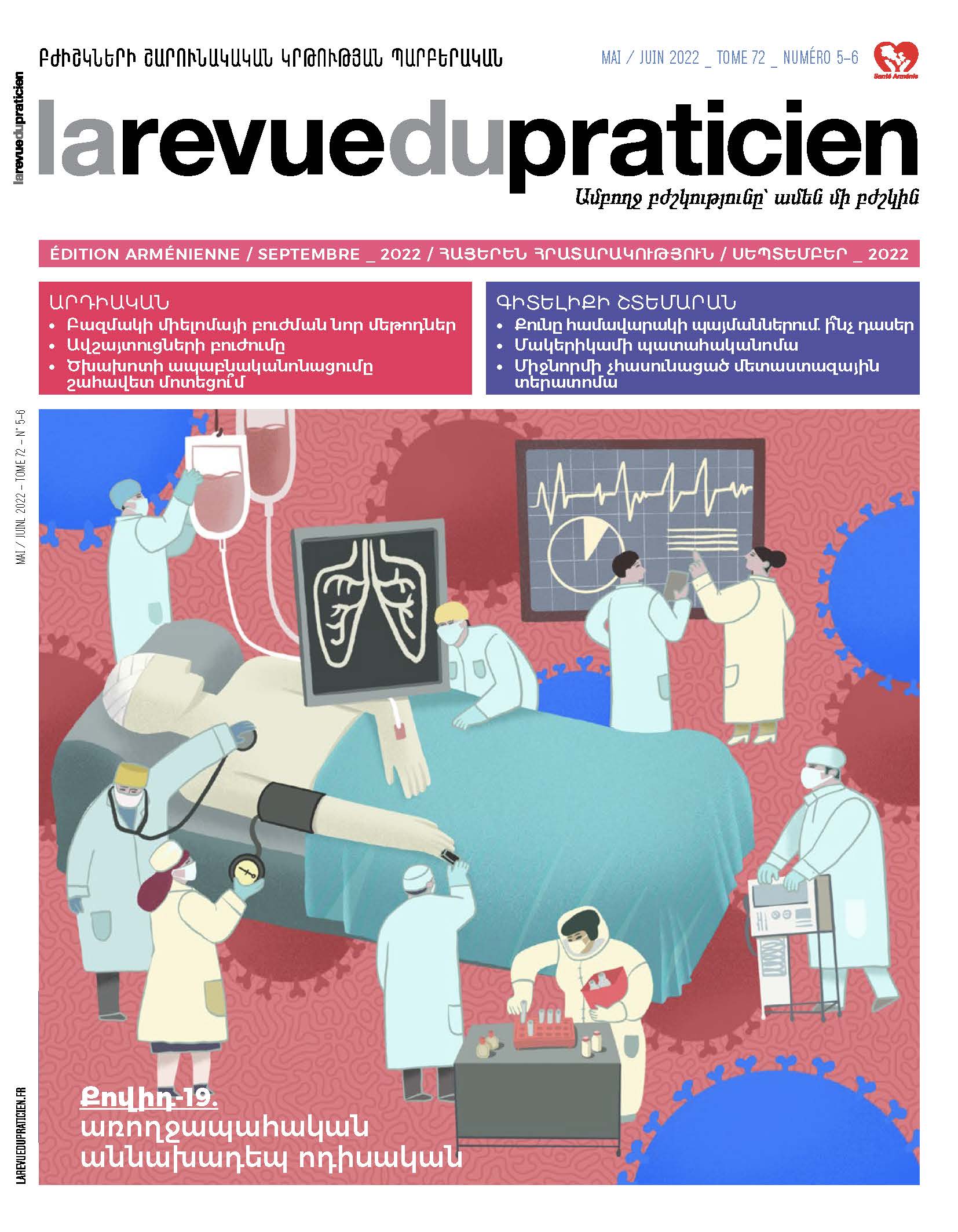Ամփոփագիր
Քովիդ-19-ի ծանր և կրիտիկական ձևերով ախտահարված հիվանդների բուժումը վերակենդանացման բաժանմունքում ներառում է հիվանդության հարուցած խոր թերթթվածնության դեմ պայքարող թթվածնային բուժումը: Այն կարող է իրականացվել ոչ միջամտական (ինվազիվ) եղանակով (բարձր կոնցենտրացիայով դիմակ, բարձր հոսքով թթվածնային բուժում, ոչ միջամտական օդափոխություն) կամ ինվազիվ` բերանաշնչափողային ինտուբացիայով` առավել ծանր ձևերի դեպքում: Այնուհետև ախտանշանային վարումը լրացվում է այլ ծագման` ոչ Քովիդ-19-ով պայմանավորված, սուր շնչառական դիսթրես համախտանիշի (ՍՇԴՀ) բուժմամբ` թոքերի մեխանիկական պաշտպանիչ օդափոխության, հանգստացնող և նույնիսկ կուրարե պարունակող դեղամիջոցների ու փորին պառկած դիրքի միջոցով, երբ թերթթվածնությունը խորն է: Նաև հարկավոր է ախտորոշել և բուժել այլ օրգանների անբավարարությունները, այդ թվում` հեմոդինամիկական և երիկամային: Թրոմբականխարգելումը` ավելի մեծ չափաբաժնով, քան սովորաբար է ցուցվում (միջանկյալ կամ նույնիսկ ապաքինող չափաբաժին), հարկավոր է սկսել հիվանդության սուր փուլում: Վերջապես, առանձնահատուկ վարումն առաջին հերթին հենվում է համակարգային կորտիկոստերոիդային բուժման վրա (6 մգ/օր դեքսամետազոն, հնարավոր է` տոցիլիզումաբի հետ համակցված): Այս հիվանդության բուժման այլ առանձնահատուկ մեթոդներ այսօրվա դրությամբ չեն ապացուցել իրենց արդյունավետությունը վերակենդանացման բաժանմունքում բուժվող հիվանդների համար:
